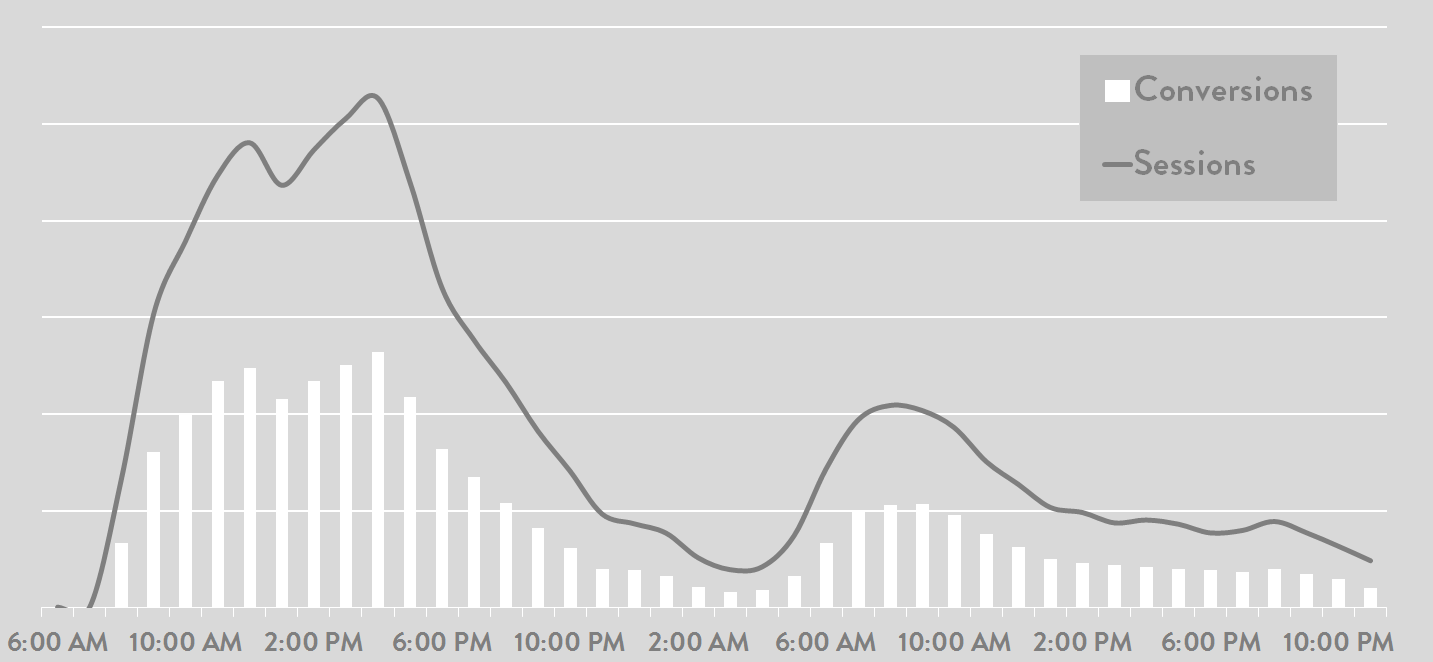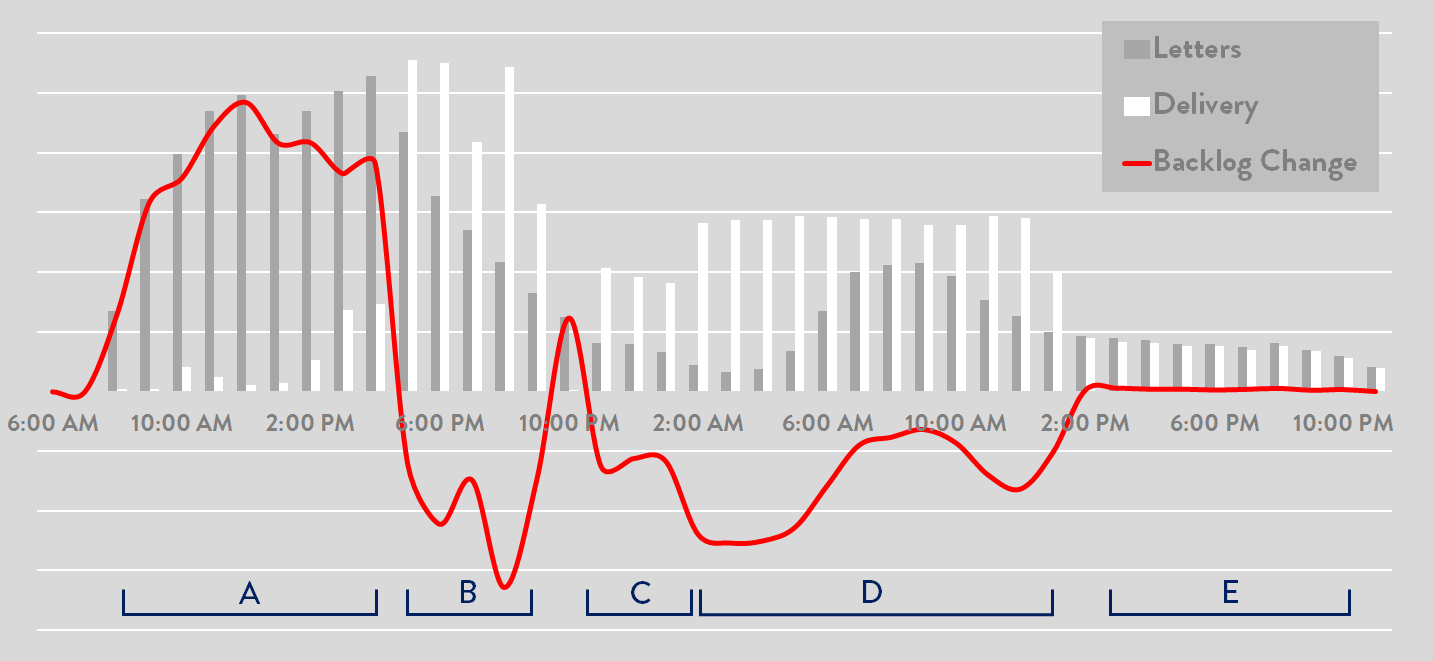March 12, 2017
| Article | Analytics
The Lifecyle in Detail of an Email Advocacy Campaign
When an issue arises in government that requires fast mobilization of your advocates, you typically blast them with an urgent email call-to-action. And then, you wait and watch the letters roll in.
We decided to take a closer look at the data, hour-by-hour, to understand what happens while we wait, and uncover ways to make a stronger, timely impact.
The Long Tail of Email
The lifecycle of an advocacy email campaign spans several days. In this case, the mailing list was nearly 5 million people, so the emails were throttled at 500,000 per hour for nine hours. Not surprisingly, the number of conversions per hour grew until 4:00 PM, when the last batch of emails was sent.
Of course, not everyone opens their email immediately. One study says that the average worker receives 120 emails per day – a lot of clutter to cut through. So we saw a steady amount of traffic and conversions into the evening, with a dip over night, and another strong burst of activity the following day.

Large Screens Still Rule, But Don't Forget Mobile
Even at work, a large share of people read their email on mobile devices. So we decided to look at conversion rates by device category. The larger screens of desktop and tablet devices were neck-in-neck at the outset, with mobile phones trailing the pack by 10 percentage points. Note that we typically see conversion rates in the 70-90% range, but this mailing's audience was very large and less targeted.
What was interesting is how conversion rates on desktop maintained their conversion rate, while both mobile phones and tablets declined. Why would the passage of time since the mailing was sent influence their likelihood to convert? My theory is simple: people who care about the issue most will open, click and act first. Your less ardent advocates may not be compelled to read it right away.

Yes, But Have You Delivered?
If you've done this for a while, you know that letters sent to policymakers are not always seen or felt right away, which leads to the logical question from your client "were they actually delivered?" (Another reason we like to complement our letter campaigns with a Tweet component.)
Our technology allows us to closely monitor every step in the process. We follow the letter from the webform to the database to the 3rd party delivery service to the policymaker's CRM. It is critical to understand how much data can be processed along the way.
- What volume of traffic and form submissions can your website handle?
- How is the back-end set up to process and deliver those letters via API to the delivery service?
- How quickly can the delivery service process your data and respond with a code indicating success or failure?
This campaign was our first on a new, enterprise-level hosting environment. I'll take you through the play-by-play.
- A: at the 6:00 AM launch, our primary goal was to ensure the website was running smoothly and collecting the form submissions without a hiccup. We were getting pummeled with traffic, but the site remained lightning-quick. After a few hours of confidence-boosting monitoring of site performance, we checked the database logs and letter reports, and found that very few letters were being processed. Why? The server cron job was only running once per hour and processing only 15 letters per cron job. So we first experimented with larger cron jobs of 50, 100 and 500 letters per job. We settled at 250 as the maximum number that the delivery service could handle without failure. However, the hosting limitation of one cron job per hour remained.
- B: at 4:00 PM, we began to manually trigger the cron job, processing 250 letters every 3-4 minutes. We quickly began to eat into the backlog of letters, but it was manual and unsustainable. (I was triggering cron jobs from my phone at red lights and while playing Guess Who? with my kids at home.) Around 10:00 PM, the delivery system's server couldn't keep up and went down for about an hour.
- C: from 11:00 PM to 2:00 AM, our team of developers got the system running again, tested a better volume of letters per cron run, and wrote a script to automate the triggering of cron jobs.
- D: by 2:00 AM, the script was in place and performing beautifully, as we systematically delivered letters at a consistent, solid rate through the night. Delivery outpaced the number of new letter submissions, and our backlog dwindled.
- E: by 2:00 PM the next day, the backlog was gone and we delivered letters in near real-time throughout the day.
Lessons Learned
If you ever stop learning, it's time to move on. Luckily for those of us who love the world of digital advocacy, change is constant and there is always more to learn. Our top takeaways from this campaign were:
- Take the time to map out your system. Understand every step, every trigger and any potential bottleneck or possible point of failure.
- Email is still extremely effective at driving action, fast. A large portion of actions will be taken immediately on the first day.
- Send a reminder email. Your advocates are as inundated in email as you, and maybe the timing of your first message was during a fire-drill at work or a diaper change at home. Give them a second chance.
- Ensure that your landing page is mobile-friendly. See if you can match your desktop performance or come close.
- Add SMS to complement your email delivery channel. As conversion rates decline hour-by-hour, SMS can cut through with a personalized, urgent reminder that is nearly guaranteed to be read.